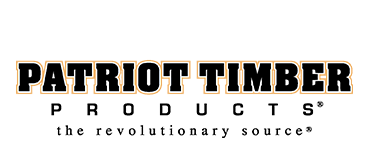RevolutionPly ® Plywood FAQs
We are pleased to bring you the following RevolutionPly® plywood related frequently asked questions. Still have a question not answered? Reach out to us here.
RevolutionPly® plywood is manufactured from plantation and sustainable wood sources and is a far better alternative to Meranti plywood and Lauan/Luan plywood that originates from poorly managed tropical rainforests. RevolutionPly® plywood is a higher quality panel than Meranti plywood and Lauan/Luan plywood. RevolutionPly® has a consistent appearance from piece to piece, a blemish-free face, and has the best packaging in the industry.
RevolutionPly® plywood is ideal for a variety of applications, including flooring underlayment, paneling, millwork, and woodworking projects.
RevolutionPly® panels are designed for interior applications only. They are not for direct exterior exposure.
RevolutionPly® panels should acclimate 24 to 48 hours in a climate controlled home environment of approximately 70 degrees Fahrenheit.
Go to Patriot Timber's Flex and Look Test Page to see the 4 simple steps or to watch a short video. The Flex and Look Test is an important procedure that only takes a few seconds and should be applied to any panel prior to use. Flexing the panel will help to reveal any delamination or core imperfections. In the rare instance you find such an imperfection, do not use the panel. Set it aside, and contact Patriot Timber Products immediately for a resolution.
Yes. If a self-leveler is needed, it should never be applied on top of the RevolutionPly® plywood. Apply self-leveler to the structural subfloor or existing floor prior to the installation of the RevolutionPly® panels.
The RevolutionPly® panels should be installed with the label facing down towards the structural subfloor.
No. Never attach, glue, or adhere the RevolutionPly® panels to the subfloor with any type of adhesive. Gluing underlayment panels to the subfloor can cause problems such as a tack and release floor that crackles when you walk across it. In addition, gluing the underlayment panels to your structural subfloor will eliminate the opportunity to remove the underlayment for a future floor replacement. We do not warrant our underlayment panels that have been glued to the subfloor.
Yes, you can use coated flathead wood screws. Do not use drywall screws. Make sure the screw selected has a minimum 3/16” diameter head. The screw you choose should not penetrate through the bottom of the subfloor. To correctly secure RevolutionPly® panels to the subfloor, the minimum spacing requirement between each fastener is every 4” on center in the body of the panel and every 2” along the panel perimeter. This will eliminate potential flooring issues resulting from insufficient and incorrect fastener placement.
No. Our preferred method is to lightly butt the panels together for a patch-free installation. The second method is to leave an expansion joint, approximately the thickness of a nickel, between the panels, and fill the seams with a Portland Cement-based seam filler. Please note you may leave an expansion joint without seam filler when the RevolutionPly® panels are installed under carpet, engineered floors, or wood floors. We strongly recommend you read our full instructions on using seam filler and how to prevent telegraphing seams in our RevolutionPly®Installation Instructions or by watching our SurePly® Premium Underlayment Installation Video.
RevolutionPly® plywood can be installed directly to wall studs as well as placed over a solid wall surface such as existing sheetrock, paneling or other wall covering. Blocking and bracing is recommended if you are installing directly to studs, as there may be some flex in the wall panel surface. Construction adhesive can be used in conjunction with fasteners (nails, narrow crown staples) in order to properly secure the panels. 1.5” finishing nails, 4d ring shank paneling nails, or ¼” x 1.5” narrow crown staples are recommended. RevolutionPly® plywood should be fastened every 6” on center along the panel ends and edges and 12” on center over wall studs in the panel field.
Yes. All the veneers in RevolutionPly® plywood come from plantation and sustainable wood sources. RevolutionPly® plywood contains no tropical hardwoods or species from endangered forests. RevolutionPly® plywood is certified for points toward ICC-700 National Green Building Standard™ (NGBS).
We have found the easiest method is to heat the label with a hairdryer prior to removal. If there is any residual adhesive, you can remove it using either Naphtha, Goo Gone®, mineral spirits or by lightly sanding the area.









